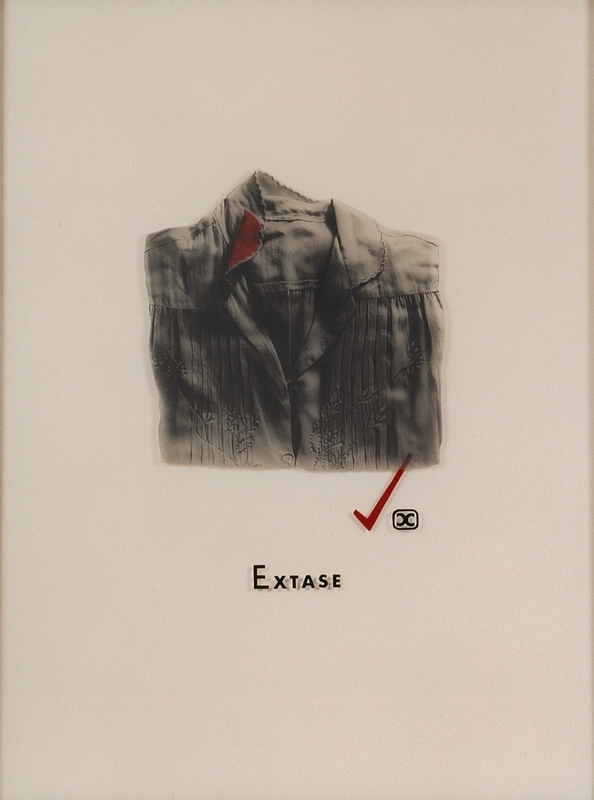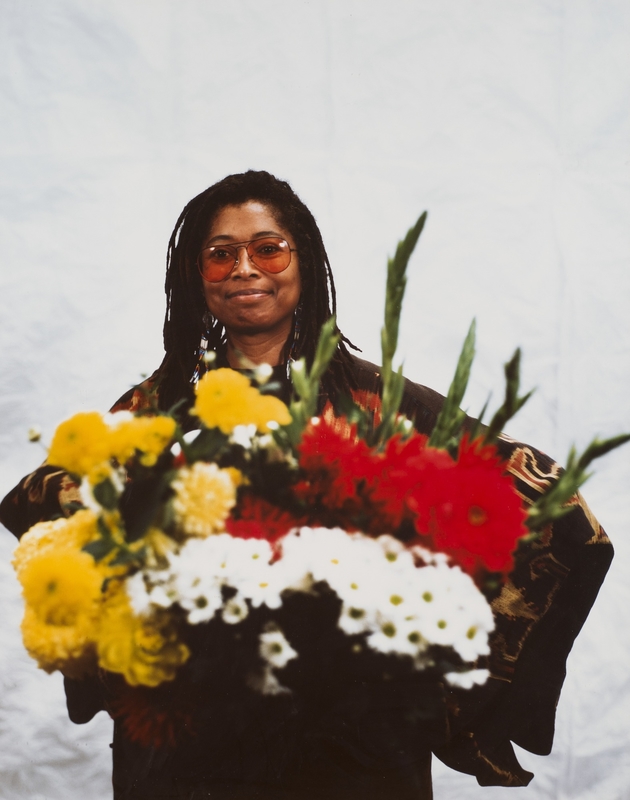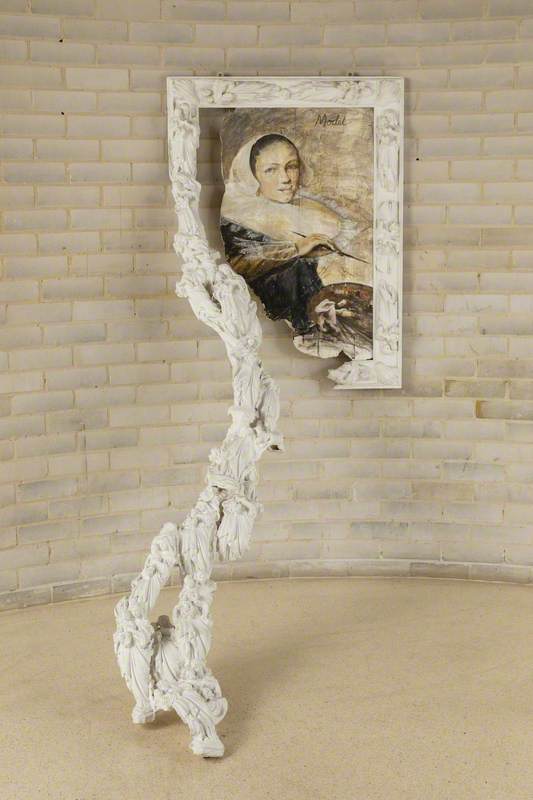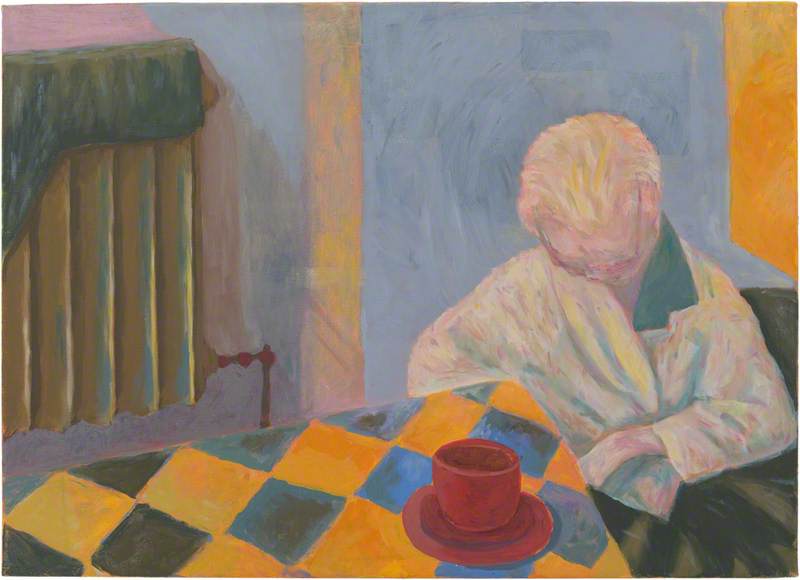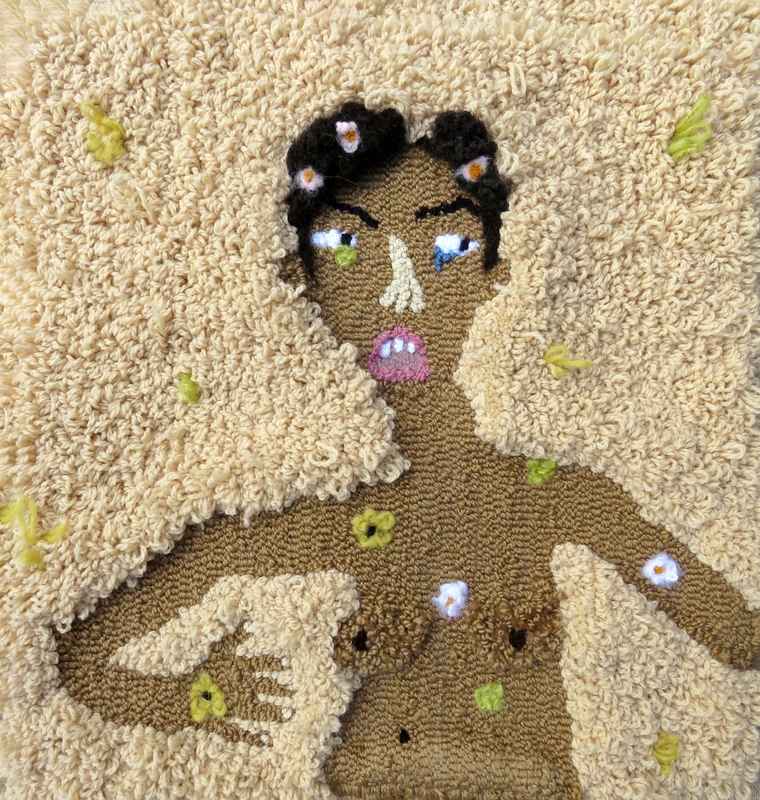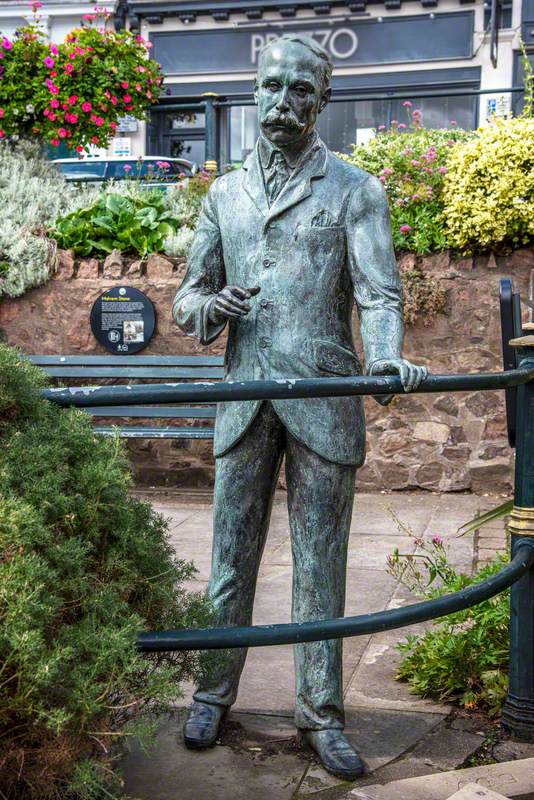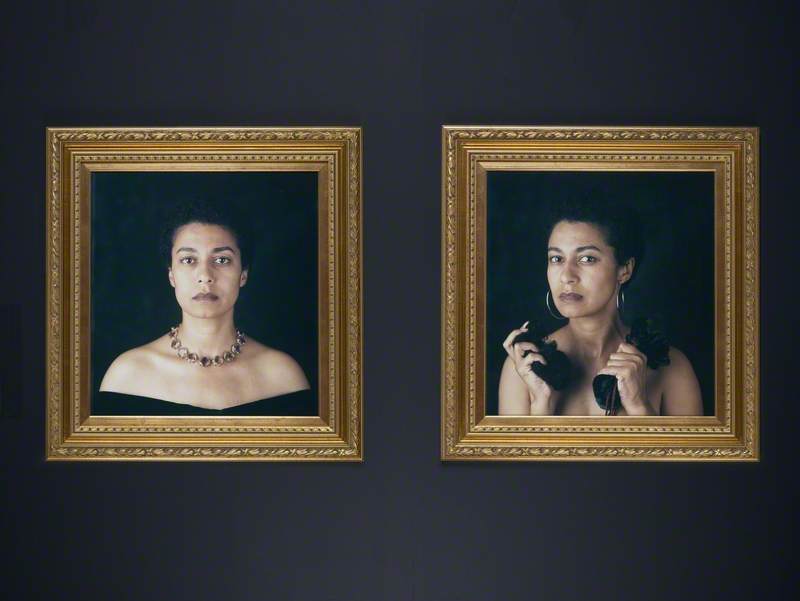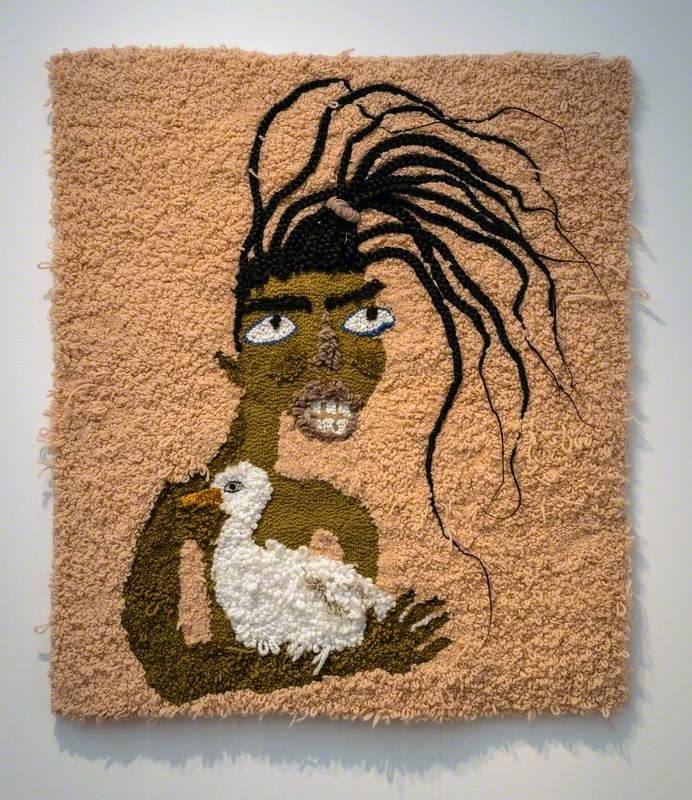The Women’s Art Collection at Murray Edwards College, University of Cambridge, is Europe’s largest collection of art by women. It includes over 600 works by leading artists such as Barbara Hepworth, Paula Rego, Lubaina Himid, Faith Ringgold, Tracey Emin and Cindy Sherman. Founded in 1992, the Collection challenges the underrepresentation of women artists in museums and galleries. It is a celebration of women’s agency and creativity, an art historical record and a living, evolving body of art. It is displayed throughout Murray Edwards College, an iconic Brutalist building designed by Chamberlin, Powell and Bon as a manifesto for women’s education.
Art Unlocked is an online talk series by Art UK in collaboration with Bloomberg Philanthropies. This Curation is based on a talk by Naomi Polonsky, Associate Curator at The Women's Art Collection, on 8th February 2023. You can watch a recording of the talk on Art UK's YouTube channel.
-
Extase
Extase 1986This work investigates the notion of female hysteria through contemporary representations of women’s fashion. It is made up of six panels, which alternate rhythmically between light and dark, image and text. The odd-numbered panels contain images of the artist’s embroidered dress in states of increasing disarray. The even ones feature satirical first-person accounts in which anonymous middle-aged women discuss fashion and their experiences as wives, mothers, sisters and daughters. The passages are based on conversations that Kelly recorded with women involved in the second-wave feminist movement. She explained: ‘I wanted to give voice to the woman, to represent her as the subject of the gaze.’
Mary Kelly (b.1941)
Laminated photo positive, silkscreen & acrylic on Plexiglas
H 122 x W 92 cm
The Women’s Art Collection
-
Phalia (Alice Walker, b.1944)
Phalia (Alice Walker, b.1944) 1989This joyful portrait of Nobel Prize-winning author Alice Walker is part of Maud Sulter’s iconic series Zabat, which features large-scale photographs of contemporary Black women in the guise of the Greek Muses. The series, which the artist called a ‘diasporan family portrait’, challenges the invisibility of Black women in Western art history. The sitters’ front-facing poses and elaborate props recall Victorian studio photography. Instead of their usual attributes the Muses hold objects which interweave the histories of Africa, America and Europe. Alice Walker is cast as Thalia, the Muse of idyllic poetry. Thalia is deliberately misspelt in the title as Phalia, the name of a city in Pakistan, reflecting Sulter’s interest in wordplay.
Maud Sulter (1960–2008)
Cibachrome print
H 152 x W 122 cm
The Women’s Art Collection
-
Models Triptych: Madonna Cascade
Models Triptych: Madonna Cascade 1982Part-painting, part-sculpture, this work depicts Judith Leyster – a Dutch Golden Age artist who was prominent and successful during her lifetime but fell into posthumous obscurity when her works were misattributed to her male contemporaries. The work is part of Garrard’s Madonna Triptych series which recreates self-portraits by three historic women artists. Each portrait has an elaborate plaster frame with casts of objects from the artist’s childhood which are laden with symbolism. In Madonna Cascade, the tumbling plaster casts are based on a figurine of the Virgin Mary that was placed next to Garrard’s bed by her Catholic mother. Garrard reclaims women artists of the past and interrogates the reasons they were lost to history.
Rose Garrard (b.1946)
Fresco panel, wood & acrylic paint
H 180.5 x W 97 x D 133 cm
The Women’s Art Collection
-
Mum with Red Cup
Mum with Red Cup 1997This quiet domestic scene depicts the artist’s kitchen with her mother seated at the table. The luminous colours convey the impression of dusk, mirroring her mother’s old age and physical frailty. The large red mug which stands centre stage further emphasises the figure’s small stature. Born into a Jewish family in Berlin, Marlene Rolfe’s mother Ilse was a member of the German Communist Party and spent three years in Nazi concentration camps before emigrating to England. Born in 1946, Rolfe herself knew almost nothing of this family history until the 1980s after which it became the focus of much of her work. In her own words, she aims to record ‘personal, private histories and continuities’, as well as ‘women’s work and women’s language’.
Marlene Rolfe (b.1946)
Oil on canvas
H 51 x W 71 cm
The Women’s Art Collection
-
Inês de Castro
Inês de Castro 2014Often taking inspiration from the folklore of her native Portugal, in this painting Paula Rego depicts the macabre tale of the 14th-century Portuguese noblewoman Inês de Castro. The story goes that Inês was murdered by the King and then exhumed and coronated by her lover, the Prince. Rego has described her work as a subversion of hierarchies: ‘I can turn the tables and make women stronger than men’. In her interpretation of the tale of Inês, Rego foregrounds her female protagonist so that she dominates the composition, even in death. The gold and red colour palette and the characters’ courtly pose mimic the appearance of a medieval illuminated manuscript. The painting explores themes of violence and nationalism, but also eternal love.
Paula Figueiroa Rego (1935–2022)
Pastel on paper
H 122 x W 145 cm
The Women’s Art Collection
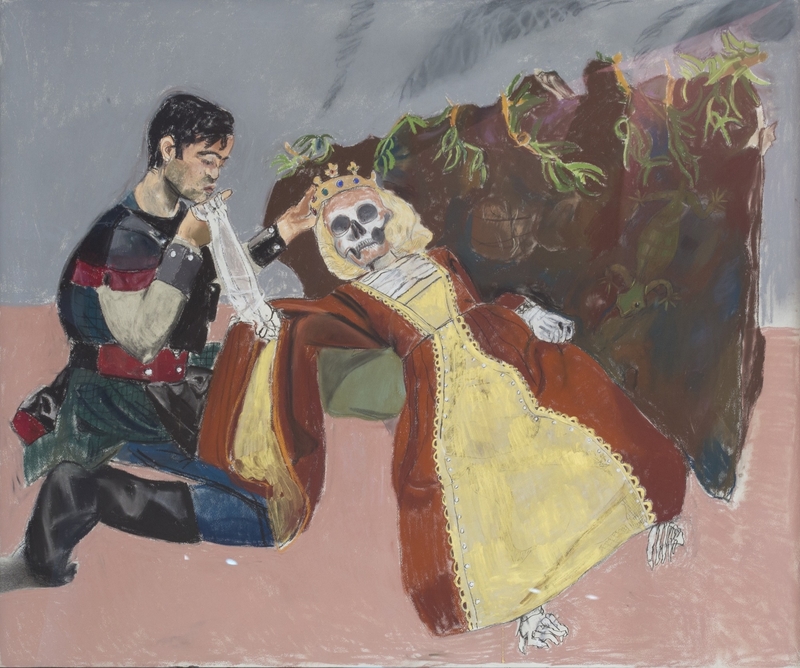 © the artist's estate / Bridgeman Images. Image credit: The Women’s Art Collection
© the artist's estate / Bridgeman Images. Image credit: The Women’s Art Collection
-
Blodeuwedd
Blodeuwedd 2022Anya Paintsil directly draws on her Welsh-Ghanaian heritage to create her distinctive textile pieces. She uses rug-hooking, passed down by generations of Welsh women in her family. She also employs Black and Afro hairstyling techniques, often integrating real and synthetic hair into the works themselves as both a personal and political act. She aims to elevate traditional craft-based practices associated with women of colour and working-class women. Blodeuwedd is part of Paintsil’s series of portraits of women from Welsh folklore, which challenges the assumption that to be Welsh means to be white. Blodeuwedd, the central character in the tale of Math fab Mathonwy, translates from Middle Welsh as ‘Flower Face’.
Anya Paintsil (b.1993)
Acrylic, wool, alpaca & mohair, synthetic hair & human hair on hessian
H 60 x W 58 cm
The Women’s Art Collection
